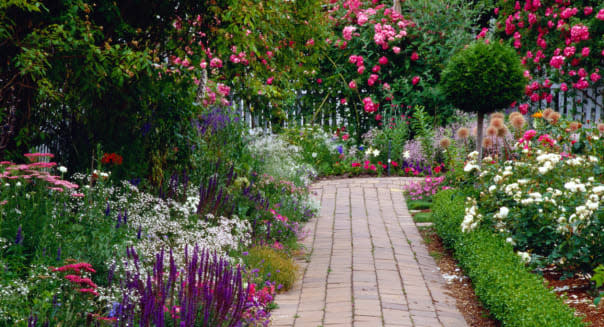10 Easy, Convenient Garden Hacks for Under $20

By Abby Hayes
Gardening, when it's done right, can be a great way to save money. Just imagine if you could grow all your own tomatoes for the summer without spending a fortune. With these 10 tips, you just might.
1. Choose the Right Plants
An unsuccessful garden often stems from choosing the wrong plants. If you don't want to dump loads of money into your garden, choose the right fruits and veggies for your area. Hardy varieties suited to your soil and climate will make the rest of the process a breeze.
Cost: Free! You're going to buy plants anyway, so you might as well buy the right ones to start.
2. Start Vegetables From Seed
Starting seeds indoors is difficult. However, plenty of vegetables and fruits are easy to direct sow. Just prepare your soil, put the seeds in at the right time and watch them go. Some easy options to direct-sow include corn, carrots, zucchini, turnips, beets, radishes and leafy greens.
Cost: 50 cents to $1 per seed packet.
3. Try Containers
If you're new to gardening or don't have a lot of space or time to invest, consider a container garden. You can use old containers, or pick them up for a couple bucks at your local dollar store. Add in a 1:1:1 blend of compost, vermiculite and peat moss for a rich DIY potting soil, and go to town.
Cost: Less than $5 for a container. Small bags of vermiculite, compost and peat moss can be found for under $10 each and should fill a few containers.
4. Make Your Own Compost Bin
Compost is one of the best ways to boost your garden's fertility. It's a great fertilizer for any garden, it's easy to make and you don't even need a fancy compost bin. If you have a large backyard, you can make a compost pile for free. Just pile up roughly equal volumes of acceptable food scraps (read: no meats, bones or dairy) with yard waste (leaves, weeds, lawn clippings). Turn it over once in a while, and it will become compost. In a smaller space, you can make a simple trash can compost bin.
Cost: Free to $20.
5. Use Cattle Fencing for Vining Produce
You can buy a 2-by-6-foot piece of cattle fencing -- a raw steel wire grid -- for about $20. You can turn it into an arch, or clip the piece in half and zip-tie the top to create a narrow V. Either option is great for trying tomatoes, beans, melons and other vining produce. The fence is sturdier than traditional tomato cages, and it lets you use your garden space more efficiently.
Cost: $20 or less.
6. Build a Cheap Rain Barrel
You can make your own affordable rain barrel to collect water. All you need is a big 55-gallon drum and a spigot head. You could even link two together with an overflow pipe for longer-lasting rainwater collection.
Cost: $15 to $20.
7. Try Companion Planting
Companion planting is an excellent way to increase the overall health of your garden -- for free. Just take your plants and position them so they benefits from their neighbors. For instance, marigolds repel pests, so plant them next to your tomatoes.
Cost: Free.
8. Attract Beneficial Insects
Want to have a more beautiful and bountiful garden? Plant flowers that attract beneficial insects to your garden. Some herbs and flowers even do double-duty by attracting pollinating and pest-eating insects while repelling those that do damage. Bachelor's buttons and sweet alyssum are two grow-from-seed options that work well.
Cost: $1-$20 (depending on how you buy your flowers).
9. Use Last Year's Leaves for Mulch
If you're not already composting last year's leaves, they make great mulch. Simply mow over the leaves with a mower that collects clippings in a bag. Then, dump them up to 3 inches thick on your vegetable garden. They'll naturally decompose and hold in water while they do.
Cost: Free.
10. Plan
The No. 1 thing you can do to save money on gardening is to plan. The last thing you want is to wind up with loads of fussy fruit and vegetable varieties that require soil amendments and babying all summer long. Figure out what zone you're in and your area's native vegetation. Then learn the best time to plant, how to repel the most common pests and how to head off common problems before they start. This simple step can turn a disastrous gardening experience into a fruitful, deliciously fun hobby.
Cost: Free.
Abby Hayes is a freelance blogger and journalist who writes for the personal finance blog The Dough Roller, which covers topics ranging from credit scores and banking to how much money you should be saving.
